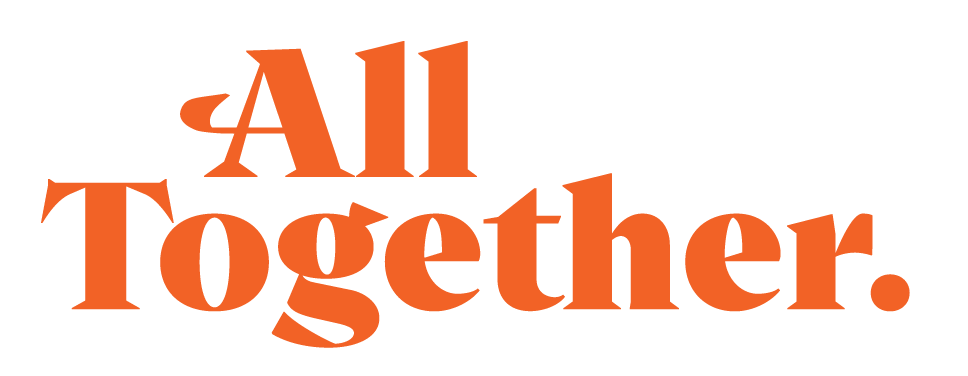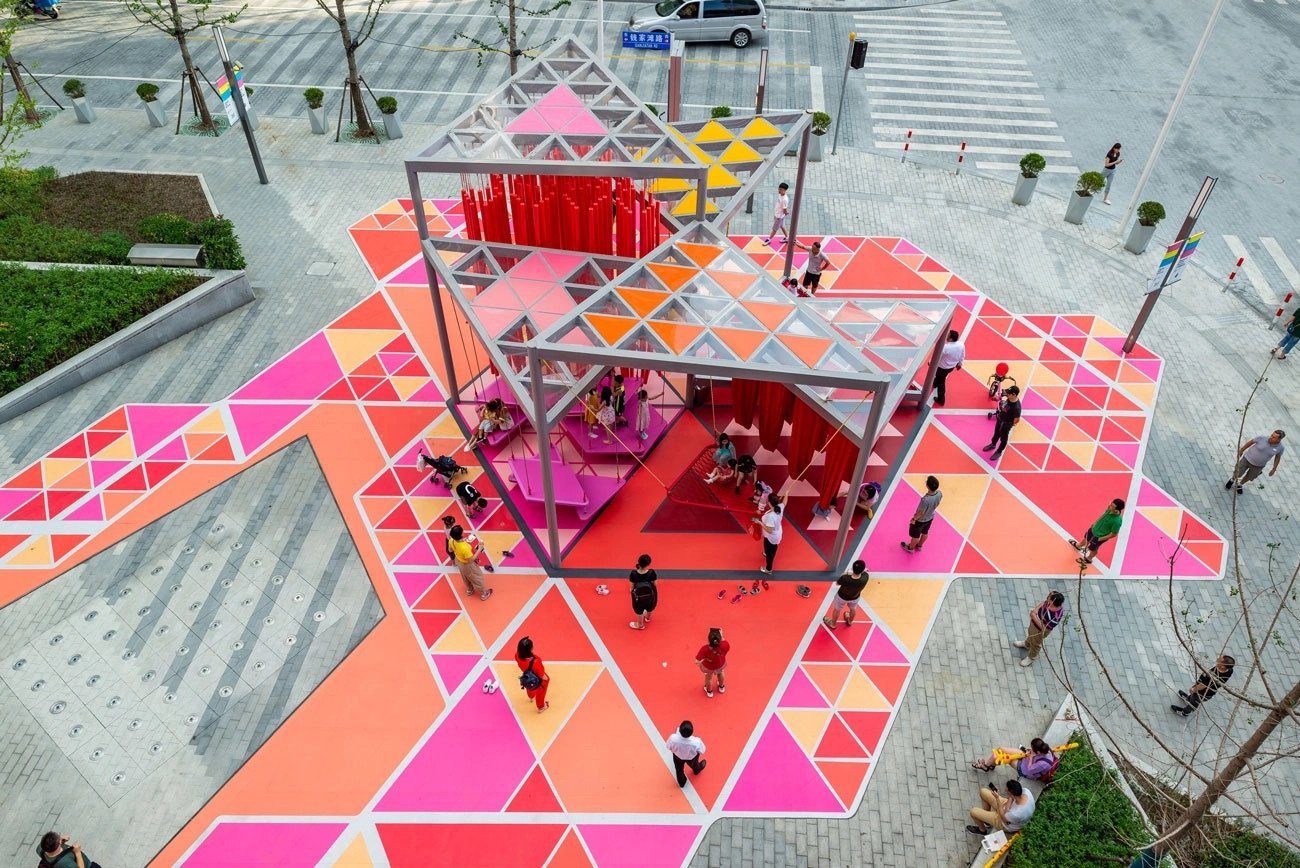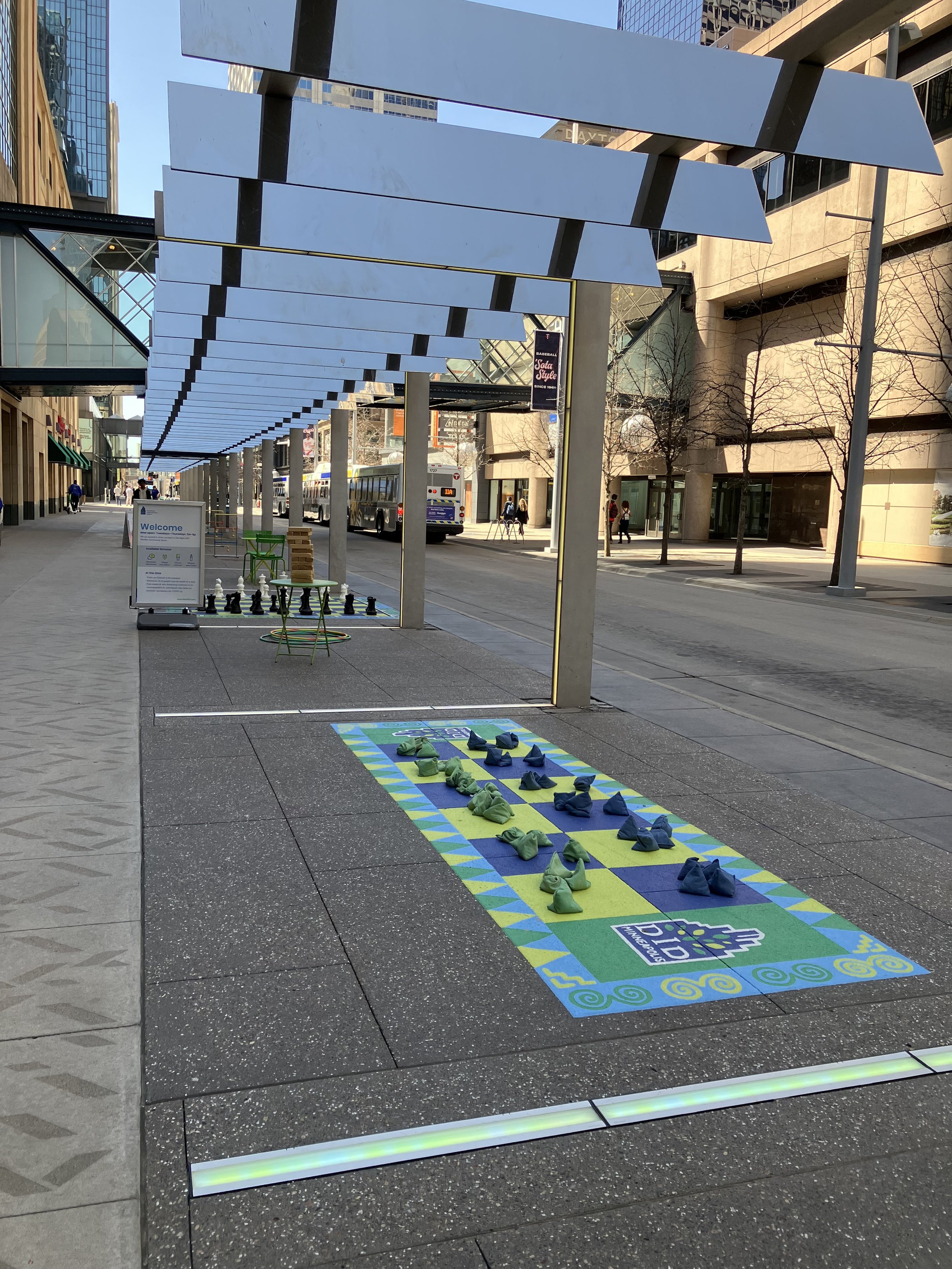What is Creative Placemaking?
In a world where cities and towns compete for talent, tourism, and investment, creating places that draw people in has never been more important. Enter creative placemaking — a strategic approach that merges community development and economic development with the arts to shape vibrant, inclusive, and thriving communities.
At its core, creative placemaking uses cultural and artistic direction to transform public spaces into vibrant, welcoming places. It’s not just about beautifying an area; it’s about fostering connections, sparking innovation, and driving sustainable growth.
A placemaking project All Together recently completed in Racine, Wisconsin
The Roots of Creative Placemaking
Creative placemaking is a relatively modern concept, but its roots trace back to the collaborative work of urban planners, artists, and policymakers. Influential organizations like the National Endowment for the Arts (NEA) and the Kresge Foundation have championed this approach, recognizing its potential to reinvigorate communities.
Key figures such as Ann Markusen and Anne Gadwa brought the term to prominence in their groundbreaking white paper, Creative Placemaking, commissioned by the NEA in 2010. Their research underscored the economic and social benefits of integrating arts into urban planning, laying the groundwork for a movement that continues to gain traction today.
Core Elements of Creative Placemaking Projects
So, what makes placemaking "creative"? It intentionally uses artistic and cultural elements to address community needs and aspirations. Here are the pillars of creative placemaking:
Public Art: Murals, sculptures, and installations that reflect a community’s identity.
Performing Arts: Installations that support and encourage street performances, concerts, and theater to activate public spaces.
Cultural Activities: Features flexible spaces for festivals, workshops, and gatherings.
Local artists and arts organizations play a pivotal role, acting as both creators and users. Their understanding of the community ensures that projects are authentic, impactful, and inclusive.
Impact and Benefits
The benefits of creative placemaking extend beyond aesthetics. Communities that embrace a place-based approach often experience:
Enhanced Quality of Life: Public spaces become more welcoming, accessible, and enjoyable.
Economic Revitalization: Increased foot traffic supports local businesses, and cultural tourism drives revenue.
Social Cohesion: Collaborative projects bring diverse groups together, fostering mutual understanding and trust.
Planners use a combination of metrics to evaluate success. Quantitative data includes property values and location data tracked using software like Placer, which provides insights into how many people visit an area, how long they stay, and where they come and go. Measuring these metrics year over year can tell a compelling story about the impact of a placemaking initiative.
Equally important is measuring resident satisfaction and quality of life, which can be assessed through surveys, interviews, and feedback sessions. These tools can provide valuable insights into how placemaking initiatives influence a community's sense of identity, belonging, and overall well-being.
Creative Placemaking in Action
Creative placemaking comes to life through real-world applications that showcase its transformative power. Consider these case studies:
A global participatory art initiative founded by artist JR, the Inside Out Project transforms personal stories into impactful public art. Through large-scale black-and-white portrait installations in public spaces, the project gives individuals and communities a platform to express their identities, highlight social issues, and foster human connection.
What began as a single installation by the Lamar Johnson Collaborative at the corner of W. Chicago and N. Lockwood Avenues has grown into a broader initiative led by Chicago’s Department of Planning and Development (DPD) and the Department of Cultural Affairs and Special Events (DCASE). These installations create a sense of place and identity for communities with limited access to public open spaces.
An interactive and colorful design installation along a one-mile stretch of a commercial corridor in Evanston. Through this project, All Together brought some joy to the area, featuring vibrant stripes that remain today in refreshed brand colors, cherished by the community.
A landmark urban park that has redefined the heart of downtown Detroit, Campus Martius Park serves as a year-round hub of activity, innovation, and community pride. Once a symbol of Detroit’s decline, it has become a catalyst for downtown revitalization, spurring economic growth and drawing millions of visitors annually to experience the plaza’s urban beach, bench swings, and rotating visual art installations.
All Together assembled a team of artists, writers, and fabricators to craft a narrative positioning Stockton as a hub for trailblazers, wonder seekers, and curious dreamers—past and present. The initiative introduced three large-scale murals, five illustrated window displays, two historical figure light-up installations, 14 interpretive signage panels, and one vibrant parklet.
Once a neglected industrial area in Lisbon, Rua Nova do Carvalho has been transformed into a vibrant pedestrian hub, known as “Pink Street” for its bold, colorful pavement. This revitalization project focused on turning the street into a lively social and cultural destination, with café seating, public art, and enhanced lighting creating a welcoming atmosphere.
Transformed into a playful and colorful urban destination by artist Camille Walala, South Molton Street in London became a vibrant hub with the installation of the Walala Lounge. Featuring bold geometric patterns and modular street furniture, the project brought a sense of joy and creativity to the pedestrianized shopping area.
A festive installation on Chicago’s Northwest Side that transformed an entire block into a glowing winter wonderland. Created by community members to bring neighbors together, the arches created a warm and inviting atmosphere, becoming a hub for community gatherings, photo opportunities, and holiday cheer.
Implementation Strategies
For municipal leaders and stakeholders looking to embrace creative placemaking, here’s how to get started:
Engage the Community: Conduct workshops and listening sessions to understand residents' needs and aspirations.
Collaborate with Artists: Partner with local creatives who can bring unique perspectives and skills to the table.
Develop a Plan: Incorporate creative placemaking into broader urban planning and community planning efforts.
Start Small: Temporary installations can be designed to test ideas before investing in a more permanent solution.
Secure Funding: Explore grants from organizations like the NEA, as well as private and nonprofit funders.
Challenges and Considerations
Despite its many benefits, creative placemaking is not without challenges. Advocacy, funding, and stakeholder engagement can be significant hurdles. Addressing these challenges requires:
Strong Advocacy: Building awareness of the tangible and intangible benefits.
Sustainable Funding: Leveraging grant opportunities and forging public-private partnerships.
Inclusive Engagement: Ensuring that all voices, especially those from underrepresented communities, are heard and valued.
The Future of Creative Placemaking
As cities evolve, so too will the role of creative placemaking. The rise of the creative economy and societal challenges—such as climate change and social inequities—demand innovative approaches. Creative placemaking can adapt to these needs, integrating technology and sustainability to address the complexities of modern life.
Municipal leaders have an opportunity to harness this powerful tool to shape their communities' futures. By embedding arts and culture into the fabric of community development, they can ensure lasting impacts for generations to come.
In Closing
Creative placemaking is more than an urban planning strategy; it’s a catalyst for transformation. Municipal leaders can leverage the arts to drive economic and community development, creating spaces that inspire, connect, and thrive.
Are you curious about how creative placemaking can benefit your community? Let’s start the conversation. Contact All Together to explore how we can bring your vision to life!
FAQs
What is the definition of creative placemaking?
Creative placemaking integrates arts and culture into community spaces to foster social, economic, and cultural transformation.
What is the cost of a placemaking installation?
The cost can be as low as the time of a group of volunteers, all the way to hundreds of thousands of dollars in design and implementation costs. There’s no one-size-fits-all answer—placemaking can happen at any budget. With creativity and collaboration, impactful installations are possible whether you’re working with limited resources or a significant investment.
Does creative placemaking need to make physical changes to a neighborhood?
Not necessarily. While physical transformations like public art are common, creative placemaking can also focus on programming and events that activate existing spaces.
How does creative placemaking contribute to community development?
Creative placemaking strengthens communities' social and economic fabric by fostering engagement, boosting local economies, and enhancing quality of life.
What are examples of placemaking?
Examples include murals, street festivals, classes, creative seating, interactive installations, and decorative lighting.




















































